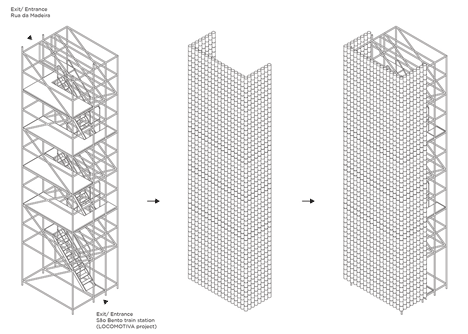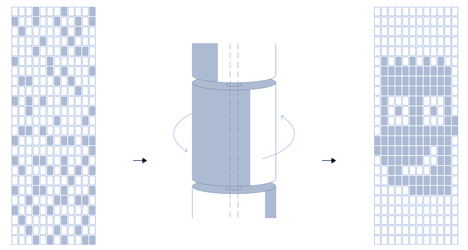Moradavaga uses spinning tin cans to turn a tower into an interactive billboard
Porto studio Moradavaga has built a tower covered in tin cans that can be rotated to create pixellated messages, resembling those on train station departure boards (+ slideshow).
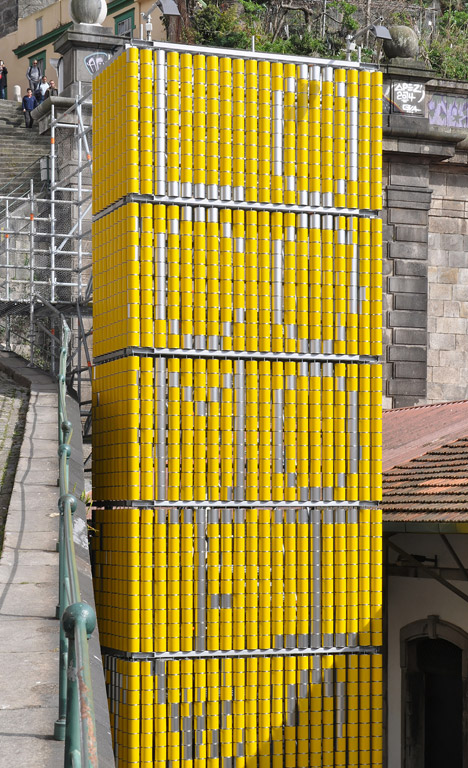
Moradavaga was invited to develop an installation as part of the Locomotiva project, which aims to transform an abandoned car park beside the historic Sao Bento station into a new public space.
The brief was to bring a new purpose to an underused corner of the newly designated plaza.
Named Vira-lata, the resulting installation takes the form of a staircase tower, allowing it to function as a new access route between the plaza and an elevated street above.
But Moradavaga – whose past projects include a set of playground swings that generate electricity – wanted to create more than just a functional structure. The team's aim was to encourage the local community to engage with the space.
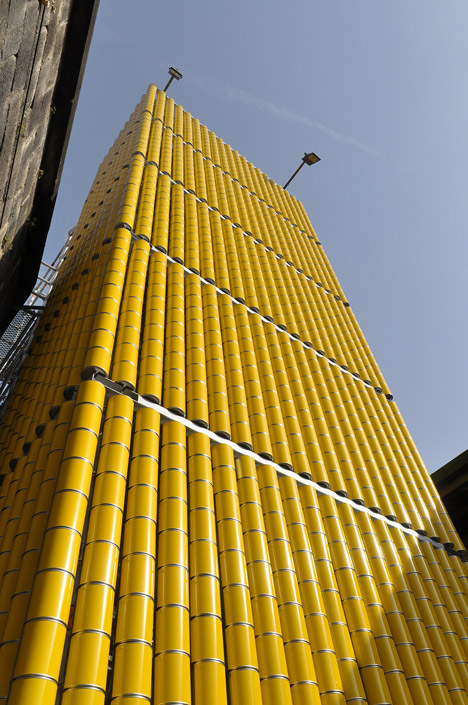
Tho achieve this, they gave the structure a facade of tin cans, which are arranged in vertical rows around a framework of standard industrial scaffolding.
The metal cans are painted bright yellow on half of their surfaces so people on the staircase can rotate them to form messages or images that become visible on the external walls.
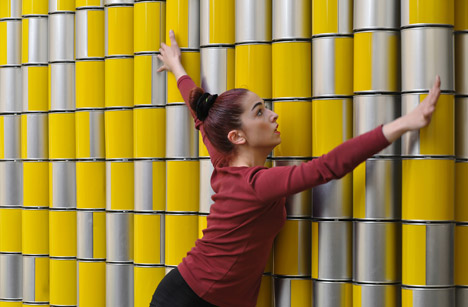
"By crossing this very functional strategy of public service with the ludic attitude and interactive nature you can find in most of our projects, we devised this communication tower that is visible from afar and thus capable of attracting people to this newly created public space," designer Manfred Eccli told Dezeen.
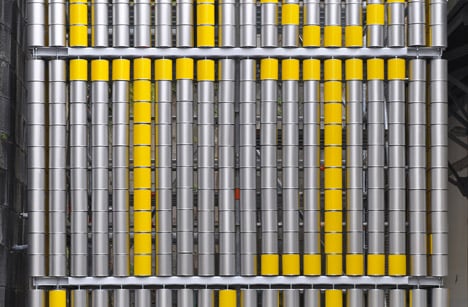
The straightforward industrial materials and construction of the interactive installation express its readymade, affordable and temporary qualities, as well as referencing the graphic look of arrival and departure boards at the nearby station.
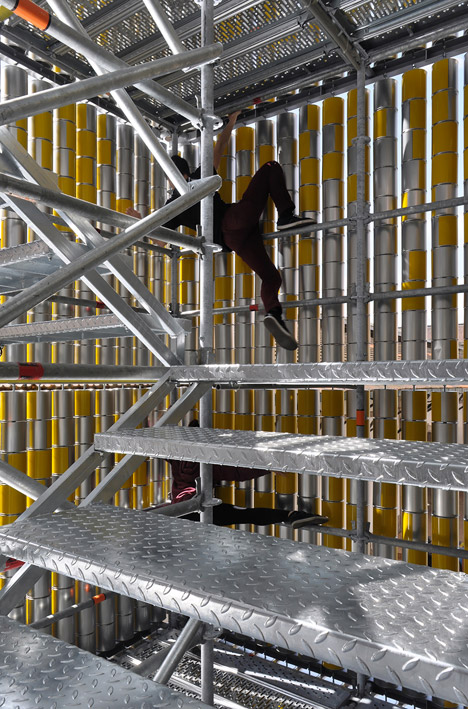
"We find it interesting to use everyday objects and re-think their function," said Eccli.
"The tin cans exhibit both the natural colour of the metal from which they are made and the strong yellow derived from the colours of the actual trains and wagons that depart and arrive from Sao Bento."

The installation will remain on the site until September 2015. Thanks to its easily demountable structure and recyclable elements, the entire tower could be reinstalled in a new location or repurposed.
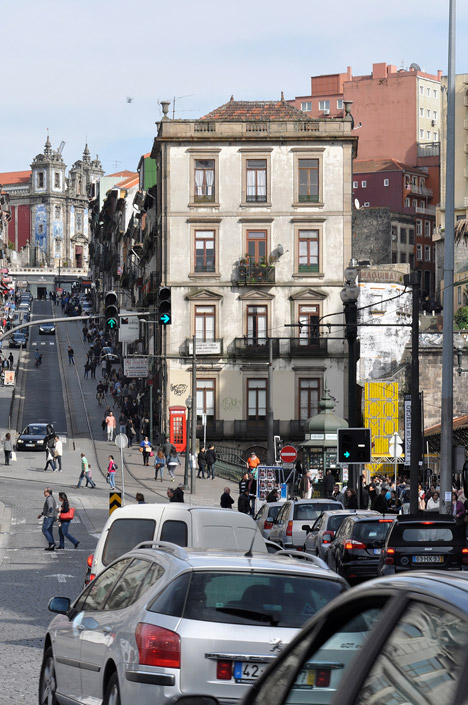
The project's title, Vira-lata, translates into English as mutt or mongrel, but also combines the Portuguese words vira, meaning turn, and lata, which means can.
"It describes in a very direct way the act of turning the cans while wittingly mentioning the intention to transform a somehow forgotten place in the city into a lively new square full of new activities," Eccli said.
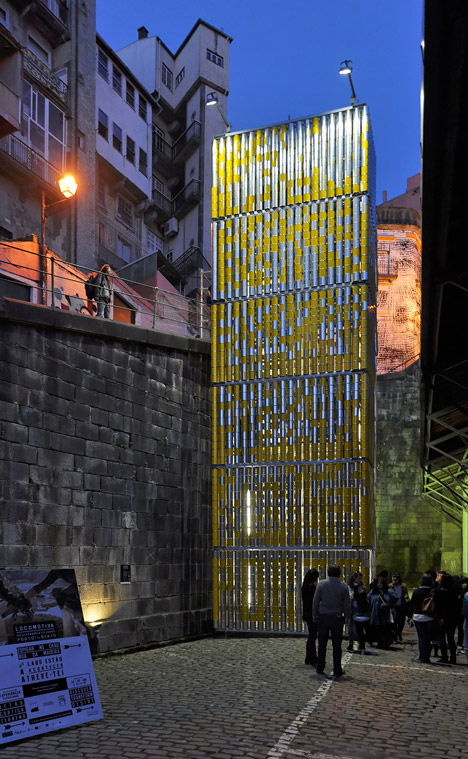
The project was overseen by Porto-Lazer, a municipal organisation responsible for entertainment, sports and leisure in the Portuguese city.
Project credits:
Design studio: Moradavaga
Collaboration: Rossana Ribeiro
Partner: Cavaco & Coquet, Lda
Structure: Catari Portugal
Support: Colep
